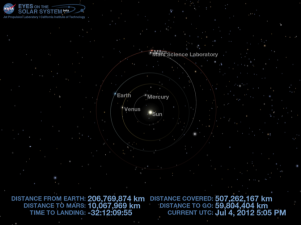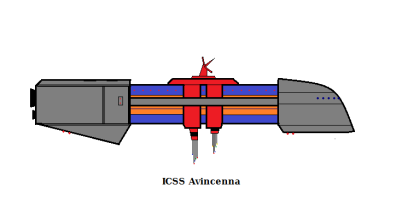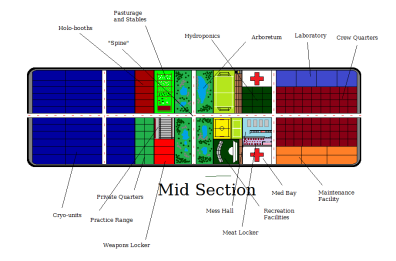Matthew S. Williams's Blog, page 200
July 4, 2012
Upcoming Mars Landing
I recently came across this story on CBC’s Quirks and Quarks, a science show dealing with all things science and tech related. Somehow, with the recent passing of Bradbury, Canada’s 145th birthday, and my obsession with colonization, this story just spoke to me on so many levels. For those who’ve been monitoring the news or NASA’s regular updates on their website, the Curiosity rover is on its way to Mars and is schedules to land on August 5th. This Martian rover is slated to roam the surface for years, looking for signs of life. And it just so happens that this vehicle carries a special Canadian instrument.
Curiosity’s position and distance to Mars as of July 4th, 2012 (NASA)
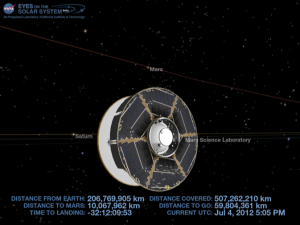 The Curiosity spacecraft, artists rendition (NASA)
The Curiosity spacecraft, artists rendition (NASA)
Once it arrives, the Curiosity, the largest rover ever sent to Mars, will execute the most complicated powered landing, in the roughest area, that a robotic lander has ever attempted on Mars. The landing site is the Gale Crater, 155 kilometres across, with a mountain rising 5 km from its centre. Curiosity is aiming for a pinpoint landing on the crater floor, right at the base of the mountain. Once there, it will begin by exploring the lower slopes of the mountain (named Mt. Sharp after a NASA geologist) and spend the next two years looking for signs of ancient water activity and possible Martian life.
The Gale Crater, the landing point indicated with a black oval (NASA)
Here’s where the Canadian technology comes in. In the course of conducting its analyses of the surface, one of the instruments that it will use is a an Alpha Particle X-Ray Spectrometer. This device was built by a team of scientists at the University of Guelph, Ontario, with Dr.Ralf Gellert acting as the principle investigator. With the help of this an other instruments and on-board mini-laboratory, the Curiosity will analyze soil samples to look for chemical signatures of past or present life.
As many people know, this elusive search has been ongoing, ever since astronomers first looked at Mars through telescopes and thought they saw artificial canals. Those hopes were quickly dashed when more detailed analyses indicated that the planet was sterile and the atmosphere too thin to support life as we know it. But once rovers began to be sent and soil samples examined, the hope of finding life once again became a matter of hard science. Though there might not be little green men dwelling on the surface, or in underground facilities, life of a sort does appear to exist within the Red Planet’s oxidized soil.
On top of all that, this information will prove useful in helping scientists to determine whether or not Mars could be terraformed to suit human needs. If that should prove to be the case, then Mars may very well become our home away from home in the not too distant future. Bradbury certainly thought as much, and look how popular he became 
The landing, and results it produces over the next two years, are sure to be exciting! In the meantime, check out this computer-simulation of Curiosity’s landing, as produced by NASA:








July 3, 2012
The Future is Here!: VR Contact Lenses
 Not long ago, it was Google introduces eye pieces that could project augmented reality into a person’s visual field. Known as Google Glasses, they sure seemed futuristic, didn’t they? And yet, it seems someone else has gone a step farther. The Defense Advanced Research Projects Agency’s (aka. DARPA) own researchers, based in Washington’s Innovega iOptiks.
Not long ago, it was Google introduces eye pieces that could project augmented reality into a person’s visual field. Known as Google Glasses, they sure seemed futuristic, didn’t they? And yet, it seems someone else has gone a step farther. The Defense Advanced Research Projects Agency’s (aka. DARPA) own researchers, based in Washington’s Innovega iOptiks.
The concept calls for contact lenses that enhance normal vision by allowing a wearer to view virtual and augmented reality images without the need for bulky apparatus. One of the obvious advantages of this is the ability to get around easily while interacting with virtual images. But in addition, they also will help a person focus on both near and distant objects.
Developed as part of DARPA’s “Soldier Centric Imaging via Computational Cameras” (SCENICC) program, the objective was to create a device that could enhance a soldier’s vision, allow them to access information, while still being highly ergonomic and portable. But of course, the line between military and civilian applications is always a fine one, with inventions trickling down to the street all the time. Very soon, these could be making their way onto the shelves of the Apple store. I can see it now… the new eyePhone!
No word yet as to how these things are powered, like if they have some kind of battery. Where would that go? Are these things solar powered? Unclear at this time. Regardless, as someone who is near-sighted, a big fan of cyberpunk, and damn eager to try out some augmented reality, I’ll be looking to get me some as soon as they’re available!








An Interior Look at Yuva’s Spaceships
I might have mentioned that things are coming together for my colleagues and I over at Grim5Next. After a few weeks, our story is really coming together. First drafts are coming in, ideas are germinating and being shared, and visuals are being made! Which brings me to the latest installments in the Anthology news cycle, after much time spent with my Windows Paint application, I have finally been able to prepare some cross sections of the ships in our story.
As already noted, we decided that for the purposes of our story, we wanted ships that could provide for crews during a long, sub-light journey through outer space. At the same time, they needed extensive cryo-facilities to ensure that thousands of colonists could be kept alive and preserved for the day when they would arrive at a new world. So basically, it would have to be a cross between a sleeper ship and a generation ship. This is what we came up with for a profile shot:
Note the segmented layout and extended middle section. This layout places the control module at the front with the bridge, navigation and whatnot, while the engine compartment, storage and shuttle bays are located at the rear. The middle section, which is an O’Neil Cylinder, is the habitation module, which rotates to provide artificial gravity. Here is where the crew sleep, eat, enjoy their leisure time, and ensure that they don’t suffer from the effects of muscular atrophy or osteoporosis.
And now, for the first time, here’s a peek at what it looks like inside. Each section was done separately to give it a maximum level of detail and ignite our collective imaginations. When complete, I hope to include them in the book to help our reader’s visualize what the interior layout of the ships would look like. Thus far, I’ve finished work on the aft and habitation sections, with the front end to follow soon. I was hoping to have them all done for today’s little unveiling, but man these things take time to generate!








July 2, 2012
“Progenitor”, another Anthology sample
 It must seem that I do nothing these days but work on this anthology. Well, in truth, it has been taking up an inordinate amount of my time lately, school being out for summer and all. Without the rugrats to occupy my attention, I tend to dedicate myself to my writing. And given the prolific output from the other members of the group, I’d say they are working just as hard!
It must seem that I do nothing these days but work on this anthology. Well, in truth, it has been taking up an inordinate amount of my time lately, school being out for summer and all. Without the rugrats to occupy my attention, I tend to dedicate myself to my writing. And given the prolific output from the other members of the group, I’d say they are working just as hard!
And here’s the proof: Khaalidah Muhammed-Ali, a stellar writer and the person who inspired this concept, recently sent me her first draft of her ongoing story. It’s called “Progenitor” in honor of the colonization project on which our story is based. I highly recommend reading it, as this story’s likely to become kind of a big deal some day soon!
Progenitor:
The most famous of Magid Muktari’s epigrams was recorded within hours of his death. As with most of his utterance within the last days of his life, it was in regards to his eldest child Sanaa, the only of his nineteen children to attain the same degree of esteem as himself.
Surely we own our progeny until they realize that we do not. ~ Magid Muktari, 2081
*****
Magid Muktari tried to read the letter, but his eyes were drawn back to the blinking red ticker tape message that scrolled across the top of the stiff paper.
祝贺, Felicitaciones, Congratulations, تهنئة , बधाई .
It had been his idea to add the admittedly eccentric touch to the acceptance letters. His colleagues had thought it excessive and unprofessional but in the end they acquiesced, giving the oldest and most contributory member of the International Intergalactic Yuva Colonization Project the leeway to make the changes he wanted before his inevitable retirement.
“What is this?” he asked knowing full well. He could not think of anything more apt to say to his oldest daughter. She understood that what he actually meant to ask was, why?
“For all the reasons you’ve been touting to the public these last fifty years.” Sanaa squared her shoulders and recited from the legendary commercial that Muktari himself had created and starred in. “Be one of the first to travel to another solar system. Be the progenitor of a new world and a new culture. Take part in the greatest experiment man will ever conduct.” Sanaa tried to smile, but was suddenly struck by just how old her father was.
Magid Muktari was actively dying. Doctors had managed to cure Muktari’s cancer twice, slow the Parkinson’s, restore his eyesight, transplant his heart, and install a semi-robotic arm, but they had not managed to cure old age. Flesh is still only flesh. Sanaa was happy that she wouldn’t be there to see her father die.
“I never intended for one of my own children…” Muktari’s slight body contracted as he coughed wetly into the bend of his arm. “Do you not realize the dangers involved?” Magid Muktari slumped back into the chair behind his desk. “This isn’t a mere trip home-side, my love. You will never come back to us again? Not to mention,” he said lowering his voice, “it would be a shame for an unmarried young woman to go off alone. This is against our tradition.”
Sanaa reached across the desk and took the letter from her father’s hand. ”According to this, I won’t be alone.“ She cleared her throat. “You will be in the exceptional company of one thousand other strong, intelligent, capable, progenitors embarking on this voyage of lifetimes.”
“What of finding a husband?”
“Do I have any marriage prospects, Baba?” The question sounded like a rebuke and Muktari cringed. There were none and Sanaa had long ago stopped hoping.
Sanaa turned away from her father and leaned against the ledge of the massive view port, her breaths misting the glass. In the distance to the right, against the black curtain of space she could see the flotilla, each ship moored in its respective dock. Tiny figures tethered to lifelines laced with blinking lights moved over the surface of the ships, readying them for what would be both their maiden and final voyage. She would be assigned to the second ship, the Avicenna, and by virtue of that alone, she thought it was the most beautiful of them all.
“I would have loved marriage,” said Sanaa wistfully, “but men don’t want women like me.” Sanaa unconsciously ran a hand over her veil. In recent times there had been a half-hearted attempt by her generation to return to the original ways; a stab back at the failures of their predecessors. But such attempts were weak and ill-informed and without real knowledge or virtue. They took only pieces of the old traditions and left the ones they deemed inconvenient. “Men want wives who believe, just not ones who show it.”
“My love, in times like these, where women outnumber men nearly two to one, and beauty and brains can be bought in equal measure for a few credits, your kind is a rare dying breed.”
Sanaa laughed weakly. “One day, I will be like the quagga, a long extinct creature that people will think was only a myth.”
“Is this why you’ve decided to do this? Because of a husband?” Muktari strained forward. “I can find someone.”
That was the crux of the problem. For thirty-three years Muktari had been finding Sanaa’s way. When she complained about her overcrowded dorm room when she first left for university back home-side, Muktari arranged for her roommates to be reassigned so she could have the room to herself. She didn’t tell him how she was thereafter ostracized but she later learned that he’d set a guard to watch her movements. When Muktari received reports about the insults, he’d had each guilty girl expelled. When the admissions board at the School of Medicine in Luxor had denied her entrance, Muktari had none too subtly reminded them who her father was. For Muktari, protection equalled love, but for Sanaa, her father’s protection was as a wet cloth over fire. She could not flourish if she was to remain. And it seemed he would not die if she remained.
Sanaa shook her head. “I’ll be leaving in six weeks, Baba.”
“I know. I’m the one who set the schedule. Remember?”
Tamima, Muktari’s fourth wife entered with a brass tray. She acknowledged Sanaa with a nod and placed the tray on the desk in front of Muktari. After she poured his tea she settled a hip onto the arm of his chair.
Sanaa could hardly bring herself to look at the woman. She had two reasons to hate her one-time friend, her only friend. Tamima had not only found a husband while she had not, but she’d found one in Sanaa’s own father.
“What does your mother have to say about your decision?” asked Muktari, rousing Sanaa from her reverie.
“I plan to go home-side next week. I will tell her then.”
Muktari smiled knowingly. “She won’t like it.”
Sanaa shrugged her shoulders. At thirty-three, surely she was old enough to make her own decisions. “No different than you, I expect.”
“Yes, but I will not stand in your way, even though it means I will never see you again.” Muktari’s eyes grew glassy. He lowered his gaze and busied himself with spooning sugar into his cup of tea. He cleared his throat before continuing. “But your mother would hijack the ship before letting you go, if she has it in her mind that you should not.”
Sanaa didn’t know the brash stubborn side of her mother that Muktari had often mused about. She’d been living with her father and his many wives and children in their residential pod since their divorce when she was eight. Her mother hadn’t minded his other wives, or their children, or even his neglect. She’d always claimed that she was the only one of his wives he’d ever truly loved. They eventually divorced because she refused to be forcibly expatriated to orbit because he’d made the decision to have more than his quota of children.
When Sanaa was young, visits home-side had never been more than a week in length and only as frequent as once every two years, so her mother had always been on her best behavior. When she lived home-side, during her years at university in Luxor, either her studies or her mother’s schedule disallowed frequent visits.
*****
I swear, science is stupid in the presence of love and God is greater than them all. ~ Magid Muktari, 2068
*****
The guide’s name tag read Adam and he wore the gray and green dress uniform of the Unified Tellurian Armed Forces. Sanaa studied him as they waited for other orientees to arrive. His hair was cropped close to his scalp and an irregular pattern of stubble shadowed his cheeks and neck. Not a very professional look for a soldier, mused Sanaa.
Adam had a keloid scar that started at his right temple and disappeared into his collar. Such a scar could be easily eliminated in a single visit to a curbside plastic surgeon back home-side. Such blemishes were unheard of there, which made Sanaa wonder if he was one of the newer models of synthetic entities. She’d heard that they would sometimes opt for the addition of physical imperfections so as to seem more human, but as most humans wouldn’t live with such a scar, such attempts at humanity were fatuous.
It was soon apparent that Adam was not an android as a dark blush spread under his pale sepia skin. “Why are you staring at me?” He asked this without looking up at her.
Tact and honesty had always worked best for Sanaa in the past. “Just trying to determine if you’re one of the new models of synthetics.” But then, she thought belatedly, perhaps it was not her tact that had worked best but the fact that she was the daughter of the august Magid Muktari, man of Earth, space, and the stars. “But, it’s obvious that you are not.”
Adam glanced sideways at Sanaa. “How can you be so sure?”
“According to Darwin, blushing is the most peculiar and most human of expressions.”
Adam tapped in a sequence on his data pad and then extended it toward Sanaa. “It seems that you are the only person to appear for the midnight orientation.”
“I’d counted on that.” Sanaa passed her hand over the data pad so that the diamond bijou she wore around her wrist lined up with the reader. A hollow voice announced her name.
In the thirty years that people had been living orbit-side, most had still not managed to shake the habit of adhering to the twenty-four hour day. There was no need to conform to the practice of guarding the hours in space, but living in the shadow of Earth was enough to make them cling to the old habit. The younger generations and those born orbit-side were less connected to the old habits and more willing to discard them for new.
Now it was Sanaa’s turn to burn under an overly curious gaze. She was accustomed to the emotions her name wrought, and by extension and to be exact, her father’s name. She read awe and uncertainty on Adam’s face. “Yes,” she acknowledged flatly, “Muktari is my father.”
“I’ve read that you helped your father design the ships, that you actually sketched the first design.”
Sanaa nodded. “This is all true.”
Adam’s eyebrows rose. The awe Sanaa first read on his face had been replaced by mild disgust. She was used to that too, people misunderstanding her certainty for arrogance, truth for contempt. She was expected to assume an attitude of false humility, play down her part in the genesis of this project. But why? Muktari had doted on her as a child, had called each of her drawings inspired, each of her stories prophesy. He wove her childish imagination into his work. He’d credited her with his very success. Social ceremony had always seemed such a waste and unnecessary deceit in Sanaa’s estimation, and the best lesson she’d ever learned from her father, although it had the tendency to breed loneliness.
“Why do you need to an orientation then? Surely, you know everything about this ship from the cargo hold to the system-wide computers to the—”
“I don’t know about the cryonics chambers.” Sanaa knew the way though, after all the Avicenna could almost be called her ship. She headed off following the maze of steel lined corridors to the cryo-stasis bay without waiting for Adam.
Sanaa found chamber eight hundred and eighty-eight, the one assigned to her. It was surrounded by hundreds of other similar chambers, glittering silver in the low blue lighting of the cryo-stasis bay. As Sanaa knelt next to her chamber she thought about how she’d had to choose this extreme course for the chance to chart her own life free from the weight of the Muktari name. When she awoke in a century, she would be only Sanaa. She would be only herself. With a push of the red button, the chamber door folded open, a cloud of cold air hissing out. IV lines dangled limply down the sides, the capped needle ends resting on the bottom.
“Doesn’t look very comfortable.” Adam stood a few chambers away with his arms crossed behind his back.
“What would be the point?” asked Sanaa absently. She passed the bijou on her wrist over the chamber console. UNAUTHORIZED blinked across the expanse of the screen. Sanaa glanced up at Adam who stepped forward and accessed the computer by punching in the code.
“I read that your father would sometimes send you to inspect—”
Brow furrowed with concentration, Sanaa held up a hand. “Hmph. Propocholine. But how…” She scrolled through the list of steps in the cryo-procedure, her heart picking up speed as she made her way through it. She’d never liked enclosed spaces and the fact that she’d be sleeping for the more than one hundred years it would take the Avicenna to reach Yuva, did nothing to allay her fears. “I should have known, clathrate hydrates.”
“Why are you so interested in the chambers?”
Sanaa disengaged the program and stood up. “Why do you want to know?”
Adam studied her for what seemed to like endless seconds. Sanaa had never been what one would call recessive, but this type of open inspection unnerved her. She crossed her arms.
Without realizing it, Adam mirrored her stance. “I was…well, just thinking that, well…”
“Go on.”
“I was thinking that if you have any academic questions about the chambers or the procedure itself, I might be able to answer them for you.”
One of Sanaa’s eyebrows lifted and her mouth formed an O. Her knowledge of medicine was impeccable, but her knowledge of history and current events lacked much. “Dr. Adam, I gather?”
The creator of the Adam Cryo-Stasis Hibernation Chamber nodded.
*****
The most apocryphal of the Muktari aphorisms is: A silent woman is a dangerous woman, an angry rebellious woman always speaks the truth, and an acquiescent woman is a liar. ~ Magid Muktari, 2056
*****
Yohan Lee grabbed Sanaa’s bag with his left hand and steadied her with his right hand under her elbow. “You seem unwell, doctor. Should we escort you to a clinic?” He gently but firmly guided her through the crowded airport toward the exit.
“Thank you for asking, Yohan, but I really am well. I had to take a hefty dose of Xanivan in order to tolerate the ride home-side. The shuttles seem to be getting smaller.”
“They are smaller, the better to preserve fuel and the cost of maintenance, they say.”
Outside, the air was thick and smelled sickly sweet. Sanaa’s eyes burned. She suddenly remembered why trips home-side never seemed much fun. The air they breathed orbit-side was purified through air processors unlike the thick as mud contaminant they choked on here.
Sanaa glanced around for her mother’s transport.
“This way, doctor.” Yohan’s hand slipped from her elbow and he headed toward the left. She lost sight of him for a moment amidst the crowd of people moving in conflicting directions, but she soon caught up with him. He lifted her bag into the trunk of a small green vehicle and slammed the lid shut. He opened the back door and motioned for her to step inside. “I trust you’re ready to depart, doctor?”
“Please stop calling me doctor.” Yohan Lee had been a wedding gift from Magid Muktari to Sanaa’s mother thirty-five years earlier and he had not changed in all that time. Although he was a synthetic entity, Sanaa often forgot he was not human. Though an older model, Yohan was of stellar quality and his learning algorithms gave him the ability to not only learn, but mimic human reactions and motivations. He’d always seemed, to Sanaa, more human than many true humans.
“I wanted to give you the respect that your title dictates.”
“Doctor is my profession, not my title.” Sanaa placed a hand on Yohan’s shoulder. “I’m just Sanaa.”
Sanaa was hardly inside the transport before Firdaws wrapped her arms around Sanaa’s neck. She pressed a wet kiss onto her cheek. “It’s been too long, child. If you didn’t look so much like me, I wouldn’t remember your face.”
Sanaa returned the hug. “It hasn’t been that long, Umm.”
Firdaws held up a hand and counted off the years, emphasizing each one by flicking up a long thin finger. “Four,” she said resolutely. “That’s too long to stay away from your mother.”
“If you had really missed me, you could have visited orbit-side.”
“You know I can’t stand going orbit-side. It isn’t natural. Man is supposed to have soil beneath his feet, not the atmosphere.”
****
Few people knew, other his closet family, that Magid Muktari was almost completely blind for the duration of nearly a year. Pioneers in the ophthamalgic sciences used an advanced yet experimental technique to restore his vision. Upon opening his eyes for the first time with his newly restored vision, it is said that Muktari exclaimed: Blindness is not the absence of vision, but indeed the state of a heart that despairs.
*****
See? What did I tell ya? Is it not a work of art in progress? Stay tuned because I hope to post follow-up pieces, including those of writer’s Goran Zidar and William Joel. If you like Terraforming, Generation Ships and AI’s, you’ll want to be around for these guys too. They’re kind of a big deal 








Upcoming Movies that Aren’t Reboots
Believe it or not, Hollywood actually has some movies that are now playing, or coming in the near future, that are not just reboots, reimaginings, or rehashings of old ideas. Much of this info comes from the online source Io9, and I have to say, I was quite impressed. To know that original ideas and long-overdue adaptations are actually in the works… wow. Still, don’t expect that this makes us even Hollywood! You’ve still wasted a ton of my and a good deal more people’s time and money!
Anyhoo, onto the list of coming or playing attractions:
Safety Not Guaranteed:
A time-traveller takes out an ad in the paper, looking for a companion to go back in time with him. A journalist, played by deadpan comedian Aubrey Plaza (of Parks and Recreation, Scott Pilgrim versus the World and Funny People), is tasked with finding a man who’s taken out the ad and determining just what his deal is. As time goes on, she becomes infatuated with the man because of his sincerity and the fact that he’s a true believer.
Produced by the same people who brought you Little Miss Sunshine and based on an actual ad, the movie explores the fine line between cynicism and realism, truth and belief. In the end, it remains a mystery whether or not the man is for real, and whether or not he is a harmless eccentric or a total nut! This movie has already been released and was screened at the 2012 Sundance Film Festival where it won the Waldo Salt Screenwriting Award.
The Prototype:
A story of a humanoid robot that contains the consciousness of its designer, a man obsessed with achieving the Singularity, as predicted by men like Ray Kurzweil. After a successful run where his mind is placed into “the prototype” robot, it escapes from its facility and is chased by government agents who believe it to be a malfunctioning military drone. Though it does look a tad cliche and over the top, it nevertheless explores some issues which are only increasing in relevance and getting closer and closer to being real.
Enders Game: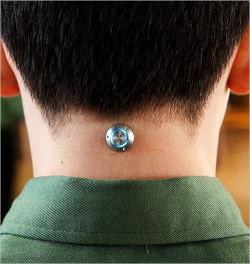 I’m not kidding! After decades of waiting, it seems that sci-fi geeks and Card fans will finally be getting a chance to see Ender adapted to the big screen. As someone who thoroughly enjoyed the original, but never got into the sequels, I can tell you that I will be waiting on this movie’s Nov. 2013 release date with eager anticipation.
I’m not kidding! After decades of waiting, it seems that sci-fi geeks and Card fans will finally be getting a chance to see Ender adapted to the big screen. As someone who thoroughly enjoyed the original, but never got into the sequels, I can tell you that I will be waiting on this movie’s Nov. 2013 release date with eager anticipation.
According to the buzz, Director Gavin Hood (of Tstosi, Rendition and X-Men Origins:Wolverine) is taking great pains to keep it as loyal to the book as possible. In addition, such big names as Harrison Ford and Ben Kingsley are attached to play Colonel Graff and Mazer Rackham, and (of Hugo fame)will be playing the lead role of Ender Wiggin.
Life of Pi: Now this is one I didn’t expect to see on the silver screen! Director Ang Lee, who brought us such hits as Crouching Tiger, Hidden Dragon, Brokeback Mountain and The Hulk will be directing this adaptation of Yann Martel’s magical novel about a boy, a lifeboat, and a handful of animals as they visit a strange island.
Now this is one I didn’t expect to see on the silver screen! Director Ang Lee, who brought us such hits as Crouching Tiger, Hidden Dragon, Brokeback Mountain and The Hulk will be directing this adaptation of Yann Martel’s magical novel about a boy, a lifeboat, and a handful of animals as they visit a strange island.
World War Z: Not surprisingly, all this zombie-fanaticism of late has encouraged the good folks in LA LA land that it’s time to adapt one of the best zombie novels of all time. Written by Max Brooks, son of famed comedian Mel Brooks and master of all things zombie, the book tells the oral history of the Zombie War and was released as a follow-up to his satirical The Zombie Survival Guide.
Not surprisingly, all this zombie-fanaticism of late has encouraged the good folks in LA LA land that it’s time to adapt one of the best zombie novels of all time. Written by Max Brooks, son of famed comedian Mel Brooks and master of all things zombie, the book tells the oral history of the Zombie War and was released as a follow-up to his satirical The Zombie Survival Guide.
According to the studio-related buzz, Marc Forster (Finding Neverland, The Kite Runner, and Quantum of Solace) is slated to direct it, Michael Straczynski (creator of Babylon 5) is attached as a screenwriter, and actor Brad Pitt will be starring as the film’s protagonist. Clearly, these folks aren’t pulling punches with this adaptation. I look forward to seeing it sometime in 2013!
Hansel and Gretel: Witch Hunters Look what you started, Abraham Lincoln: Vampire Hunter! Or was it you Snow White and the Huntsman with your decidedly violent take on a children’s classic? Perhaps it was Seth Grahame-Smith with his Pride and Prejudice and Zombies! I don’t know who’s to blame, but for some reason, it seems that fairy tales, classics of western lit and history are all getting the Buffy treatment these days.
Look what you started, Abraham Lincoln: Vampire Hunter! Or was it you Snow White and the Huntsman with your decidedly violent take on a children’s classic? Perhaps it was Seth Grahame-Smith with his Pride and Prejudice and Zombies! I don’t know who’s to blame, but for some reason, it seems that fairy tales, classics of western lit and history are all getting the Buffy treatment these days.
But I digress, Jeremy Renner of The Avengers and the new Bourne Legacy movie stars alongside Gemma Arterton (Quantum of Solace and Clash of the Titans) in this sequel to the classic fairy tale. Apparently, the story takes place 15 years after the traumatic gingerbread house incident, and the now grown-up pair have become a leather-wearing witch hunting duo. Let’s just hope the producers of Van Hellsing don’t sue for plagiarism!
Neuromancer: I almost jumped out of my seat when I read about this one, but then I noticed the production notes where it said that this movie hasn’t even been green-lighted yet. Ah well, fingers crossed it get’s made, because it would be about freaking time! Much like with Enders Game, fans of this sci-fi, cyberpunk classic have been waiting FOREVER to see a film adaptation! Several attempts have been made, but none have gotten off the ground.
I almost jumped out of my seat when I read about this one, but then I noticed the production notes where it said that this movie hasn’t even been green-lighted yet. Ah well, fingers crossed it get’s made, because it would be about freaking time! Much like with Enders Game, fans of this sci-fi, cyberpunk classic have been waiting FOREVER to see a film adaptation! Several attempts have been made, but none have gotten off the ground.
But some details are forthcoming. For one, Vincenzo Natali, the brilliant Canadian writer/director who brought us Cube and Splice, is rumored to be the man who will direct this bad boy, should it ever get made. No other news yet, but my ear is firmly pressed to the ground and I will find out if it’s happening. Bank on it!
Snow Crash: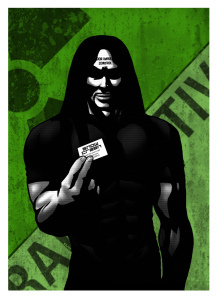 And another sci-fi movie that’s long overdue, but can never seem to get made! Well, it seems that writer/director Joe Cornish (Attack of the Block and The Adventures of Tin Tin) is set to adapt Neal Stephenson’s post-cyberpunk novel about the near future where America has been privatized, “franchulates” run everything, and a lone hacker named Hiro Protagonist investigates a potent new drug that infects users with a computer virus.
And another sci-fi movie that’s long overdue, but can never seem to get made! Well, it seems that writer/director Joe Cornish (Attack of the Block and The Adventures of Tin Tin) is set to adapt Neal Stephenson’s post-cyberpunk novel about the near future where America has been privatized, “franchulates” run everything, and a lone hacker named Hiro Protagonist investigates a potent new drug that infects users with a computer virus.
As a long0time fan of Stephenson’s, I for one will be awaiting this movie too with eager anticipation. In fact, I can scarcely believe that so many of my literary favorites are being adapted at the same time. One would think this was just a big tease, or some massive karmic payback!
Fingers crossed, people! Fingers crossed!








July 1, 2012
Updated Anthology Map!
Hey all. As you may know, my writing and I are busy at work producing an anthology about space travel and colonization. We have our location picked out, the star system Gliese 581. We have a planet, known as Gliese 581 g. We still need more writers, I was hoping for a dozen or so people to contribute to our short story collection. So if you’re a writer and enjoy classic sci-fi, space travel, exoplanets, weird aliens, androids, terraforming, sub-orbital colonies, space elevators, terradome and so forth, let me know and I’ll set you up with a project!
In the meantime, I’ve updated our map of the Gliese 581 to more accurately reflect the planets and the names they will be assigned in our story. Have a gander:








Happy Canada Day!
Hello and welcome to my Canada Day post! As it is the True North’s national birthday – commemorating the day when the original provinces came together and agreed on Confederation, the first act of national building and quasi-declaration of independence – I thought it fitting that I do a post honoring Canada’s contribution to the field of science fiction. The list is extensive, contrary to what you might you think, and includes some of the most critically acclaimed examples of literature, film and television in this genre. But like most things Canadian, it suffers from a potential lack of recognition. Well, I, as a patriotic (but not nationalistic!) individual, shall do my part to promote. Hell, one day I want to be on this list, so I better make sure people know about it 
First up, movies that were filmed, directed and produced right here in Canada, eh!
Scanners (1981): This film, directed by David Cronenberg, is considered a cult classic amongst fans of sci-fi and horror alike. In this movie, “Scanners” are people that exhibit powerful telepathic and telekinetic abilities who are being sought out by a corporation named ConSec, a purveyor of weapons and security systems. Ostensibly, their purpose is to register scanners so the public can be protected from them, but it is clear that they have a nefarious agenda as well.
This film, directed by David Cronenberg, is considered a cult classic amongst fans of sci-fi and horror alike. In this movie, “Scanners” are people that exhibit powerful telepathic and telekinetic abilities who are being sought out by a corporation named ConSec, a purveyor of weapons and security systems. Ostensibly, their purpose is to register scanners so the public can be protected from them, but it is clear that they have a nefarious agenda as well.
The story revolves around two rogue scanners, the dangerous Darryl Revok (played by Michael Ironside) and the reclusive Cameron Vale (Stephen Lack). After a “demonstration” goes terrible wrong where Revok causes Dr. Ruth – head of ConSec’s scanner section – to explode, ConSec becomes dedicated to finding all rogue scanners and stamping them out. On their radar is Revok, a known and powerful scanner who is a homeless transient, moving from place to place in the hopes of staying ahead of corporate spies.
In the end, Vale finds himself trapped between Revok’s renegade faction on the one side and ConSec’s goons on the other. In the end, he is captured by Revok and learns that they are brothers, that Ruth is their father, and that all scanners are the result of drug trials involving pregnant women and ephemerol. This drug, which was designed to combat morning sickness (echoes of thalidomide), is the same one which they now use to control scanners.
Revok’s plan is to now use a captured shipment of the drug and administer it to countless pregnant women worldwide, thus creating an army of scanners. When he learns of this, Vale and Revok begin to fight each other using their powers. In the end, Vale defeats his brother and then assumes his likeness, thus putting him in charge of the rogue scanners. The story thusly ends on a cliffhanger note, with Vale’s intentions open to speculation.
This movie was not only a cult classic, but very heavily inspired. It’s investigation of psychic abilities, with corporate controllers, rogue telepaths, and drugs used to control them, would all show up in later franchises, particularly Babylon 5. In addition, that head exploding scene is considered an iconic imagine, one which has been referenced many times over on the silver screen. Consider the line from Wayne’s World where Garth appears to be having a nervous breakdown on TV and one of their cronies asks: “Did you see that movie Scanners where the dude’s head exploded?”
Johnny Mnemonic (1995):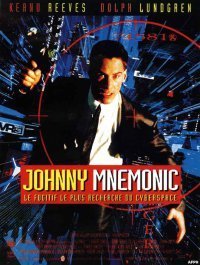 Though it was widely considered one of the worst adaptations in science fiction history, Johnny Mnemonic was nevertheless a faithful representation of William Gibson’s original work (also a Canadian). Set in the “Sprawl” of the 21st century, the story is about a mnemonic courier who uses wetwire implants (i.e. cybernetic brain implants) to carry information around illegally. This is apparently a common practice in the world of the future, where corporate control is absolute and the most precious commodity is information.
Though it was widely considered one of the worst adaptations in science fiction history, Johnny Mnemonic was nevertheless a faithful representation of William Gibson’s original work (also a Canadian). Set in the “Sprawl” of the 21st century, the story is about a mnemonic courier who uses wetwire implants (i.e. cybernetic brain implants) to carry information around illegally. This is apparently a common practice in the world of the future, where corporate control is absolute and the most precious commodity is information.
Enter into this Johnny (Reaves), a courier who is given a job to carry a package that is twice the size of his capacity. He takes it, knowing the risk it will pose to his brain, because he’s looking for that final payoff which will allow him to have his implants removed and his memory restored. This is something all mnemonic carriers must go through, which is the sacrifice of their own memories in order to make room for all the pirated data they carry.
Quickly, Johnny realizes the package he contains is incredibly valuable, as Yakuza close in and murder his contacts. His own boss betrays him as well, forcing him to turn to a freelance ninja named “Sally Shears” (aka. Molly Millions) for help. Like him, she has enhancements which are beginning to mess with her body, and she recommends they get help from her friend Spider. As a doctor, he is used to dealing with nervous system illnesses, particularly NAS (nervous attenuation syndrome).
When they arrive, Johnny is informed that he is the one who hired him, and that the information he carries comes directly from the pharmaceutical giant Pharma-Kom’s labs. It is nothing less than the cure of NAS, and the company will kill to make sure it doesn’t get it out, seeing as how they make billions off of treatment and will lose out if it is cured. The race is then on for Johnny to download the cure onto the open Net, and with the help of a group of counter-culture fighters named Lo-Tek, they manage to do just that.
Though the movie was generally panned by critics and did quite poorly at the box office, it remains a cult classic to many because of its gritty, cyberpunk feel and faithful adaptation of Gibson’s characteristic themes. It also boasted an all-star cast, which included Keannu Reaves (Canuck!), Dolph Lundgren, Takeshi Kitano, Henry Rollins, Ice-T, Dina Meyer, and Udo Kier. On top of that, it also made use of pioneering special effects to give visual representation to Gibson’s concept of “cyberspace”, the movie also contained all the elements he so loves to include in his stories. Freelancers, Yakuza, mega-corporations, mercenaries, cybernetic enhancements, dirty environments, urban sprawl, hackers and techy geeks. This movie had all that, and is required viewing for fans of Neuromancer and Gibson’s Sprawl Trilogy.
Screamers (1995):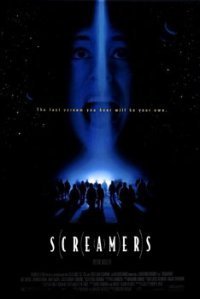 Here’s a cult classic I keep coming back to of late! Based on Philip K. Dick’s “Second Variety”, Screamers is another adaptation of classic sci-fi which was filmed, directed and financed here in the Great White North. And I mean that literally since most of the filming took place in a quarry in Quebec during the dead of winter. And though the story was updated for the post-Cold War world, set on a distant planet and being a war between corporate interests and quasi-national forces, the basic elements remained much the same.
Here’s a cult classic I keep coming back to of late! Based on Philip K. Dick’s “Second Variety”, Screamers is another adaptation of classic sci-fi which was filmed, directed and financed here in the Great White North. And I mean that literally since most of the filming took place in a quarry in Quebec during the dead of winter. And though the story was updated for the post-Cold War world, set on a distant planet and being a war between corporate interests and quasi-national forces, the basic elements remained much the same.
Taking place in 2078 on a planet known as Sirius 6b, the story revolves around an ongoing war between two factions who are fighting for control of the planet. On the one side is the NEB (New Economic Bloc), a super-corporate entity that controls mining in outer space. On the other is the Alliance, a resistance formed out of the former miners and scientists from the colony.
After the NEB bombarded the planet with nukes, turning it into a radioactive wasteland that is perennially experiencing nuclear winter, the Alliance resorted to creating devices known as the “Autonomous Mobile Sword”, a race of self-replicating machines built by a self-sustaining underground factory. These weapons, which tunnel underground and use high-pitched sonic blasts to paralyze opponents, carry the nickname of “Screamers”.
The story opens when a NEB representative comes to the Alliance bunker offering a ceasefire. After investigating the situation, the Alliance commander JOe Hendricksson (played by Peter Weller, aka. Robocop) realizes that the war still rages back home and no one cares what happens to them anymore. He decides to take the NEB up on their offer to end the fight on Sirius 6b, but during his trip to the NEB bunker, learns that new breeds of Screamers are out there. After meeting with Jessica (Jennifer Rubin), the NEB mercenary commander, they attempt to investigate the Screamer factory and learn that there are in fact four varieties now, each of which is becoming more human!
They make it back to the Alliance bunker, only to see that it too has been overrun. In the end, only Hendrickson and Jessica survive and begin making their way to the emergency escape shuttle hidden in the nearby mountains. Once there, Hendrickson learns that Jessica herself is a Screamer when an identical model of her appears and attacks them. Apparently, she is the fifth variety and the most advanced model to date, one that bleed, cry, imitate human emotions, and even have sex. Jessica sacrifices herself to protect him, and Hendrickson learns that her mission was to find the escape shuttle and go back to Earth where they could be sterilizing it of all life as well.
This was in keeping with the Screamer new mandate which was to destroy all human life, not just their enemies. However, that ended when Jessica became over-sympathetic to Hendrickson and broke with her original programming, thus demonstrating the most human characteristic of all, that of empathy. Hendrickson then takes the shuttle himself and leaves the planet, bound for Earth, and safe in the knowledge that the Screamers will never get off Sirius 6b.
Thought it differed in many ways from the original PKD short story, the thematic nature of the movie was accurate. You have the idea of the Screamers, the automonous, self-replicating and intelligent machines that are left to their own devices and end up turning on their own masters. You have the concept of runaway technology erasing the line between what is real and fake. Thought it ended on a happy note, unlike “Second Variety” where a machine made it off planet, the movie still managed to deliver on its message. And it was pretty damn scary too boot!
Cube (1997):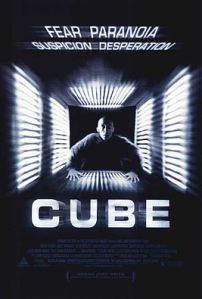 Here is another cult-classic that practically created its own sub-genre in science fiction film making. Directed by Vincenzo Natali and produced by the Canadian Film Centre as its first First Feature Project, Cube became an instant hit due to its paranoid, Kafkaesque feel and psychological thriller tone. Set inside a giant (you guessed it) Cube, made up of countless adjoining rooms that are numbered and contain different booby traps, the story revolves around a series of strangers who wake up inside and must find their way out.
Here is another cult-classic that practically created its own sub-genre in science fiction film making. Directed by Vincenzo Natali and produced by the Canadian Film Centre as its first First Feature Project, Cube became an instant hit due to its paranoid, Kafkaesque feel and psychological thriller tone. Set inside a giant (you guessed it) Cube, made up of countless adjoining rooms that are numbered and contain different booby traps, the story revolves around a series of strangers who wake up inside and must find their way out.
What is immediately apparent to all the characters in the story is that they all possess different abilities and share the same story. Each and every one of them was carrying on with their daily lives, only to wake up and find themselves inside a cube-shaped room. None of them know each other or can remember how they got here, but once they found each other, they agree to work together and find the way out.
Amongst the captives is Quentin (Maurice Dean Wint), a charismatic police officer who takes command, Leaven (Nicole deBoer) a young mathematics student, Holloway (Nicky Guadagni), a doctor and conspiracy theorist, and Worth (David Hewlett), a pessimistic man who refuses to talk about himself. Quentin believes they all have a role to play, Holloway believes they are part of a government experiment, Leaven develops a theory that the room’s numbered in prime are the safe ones, and Rennes follows but seems skeptical of their chances.
As they continue, they find that Quentin’s theory about the prime numbered-rooms is flawed. Tensions also begin to rise within the group because of Holloway’s paranoia, Quentin’s controlling behavior, and Worth’s reticence. The group then experiences a bit of a breakdown, during which time Worth finally reveals that he was one of the architects who helped design the Cube. He never knew what it was for or who even commissioned it, the specs merely passed his desk and he added his own insight. He believes that essentially, the Cube created itself, the result of human stupidity and complacency.
However, Leaven concludes from Worth’s description that the numbers might actually be Cartesian coordinates, and the group begins working its way to one of the outer edges. They also come across a mentally challenged boy named Kazan, who Quentin wants to leave behind by Leaven insists they bring. But in time, their efforts prove futile when another feature of the Cube is revealed, the fact that it periodically shifts its rooms around. Another breakdowns occurs as Quentin becomes paranoid and shows his dark side. After a confrontation with Holloway, he lets her fall to her death, thinking she was out to get him.
The group begins to truly fall apart as Quentin’s true nature is revealed. It seems he is a violent man with a penchant for young girls, the reason why his wife left him with their kids. He begins to run the group through bullying and fear. But a ray of hope emerges when Leaven concludes that the numbers are not primes or coordinates by powers of prime numbers. She cannot calculate them, but the mentally challenged boy Kazan – an apparent autistic savant – can. They continue on their way and Worth incapacitates Quentin, who has now gone completely insane.
Eventually, they find their way to the outer edge and prepare to leave, but Worth wonders if it’s worth it considering that there is nothing out there but “boundless human stupidity”. They are about to step out when Quentin sets upon them. Leaven jumps in to help, and the three are pulled back in as the room’s once again shift. Kazan is left alone to walk out into the light of day, free of the Cube.
Where to begin? This story was a masterful piece of psychological thriller and paranoid fantasy! The fact that we never truly learn who built the Cube, what purpose the “test” really served, and the possibility that complacency and ineptitude is what built it not only makes for a mysterious story, but a big, fat existential allegory! For in the end, are we not all prisoners within a giant maze we can’t discern, who’s maker is unknown and who’s purpose in indistinct? Calling to mind Kafka, Sartre and the “Allegory of the Cave” – a la Socrates – these movie was not only a nail-biting thriller but a fittingly dark philosophical commentary.
Last Night (1998): Filmed and set in Toronto by writer/actor/director Don McKellar, this apocalyptic sci-fi film tells the story of the last night on Earth, and shows various people choose to spend it. Though the date is not specified, and no explanation is given as to what calamity will be bringing the world to an end, it is made abundantly clear that it will be coming at the stroke of midnight, leaving everyone in the story only a few hours with which to live life to the fullest.
Filmed and set in Toronto by writer/actor/director Don McKellar, this apocalyptic sci-fi film tells the story of the last night on Earth, and shows various people choose to spend it. Though the date is not specified, and no explanation is given as to what calamity will be bringing the world to an end, it is made abundantly clear that it will be coming at the stroke of midnight, leaving everyone in the story only a few hours with which to live life to the fullest.
Naturally, the streets are filled with people who have decided to riot, loot and generally wreak havoc. But the main focus of the story is on the lives of various intersecting characters who have chosen to use their time more constructively. One is Patrick (played by McKellar himself), who lost his wife not long ago and is spending the time saying goodbye to family and friends, but who seems to want to spend the last of it alone.
His best friend Craig (Callum Keith Rennie) chooses to spend it in a non-stop sexual marathon as he attempts to fulfill every possible erotic desire he has, not to mention those of his partners. This includes having sex with his former French teacher, a black woman, a virgin, and just about any other scenario he can think of. When Patrick comes to say good-bye, he clumsily tries to encourage him to have sex with him as well. Patrick awkwardly declines, but Craig manages to get a sustained kiss out of him before he goes.
Meanwhile, Sandra (Sandra Oh), who has become stranded in the streets, meets up with Patrick and they get to talking. After realizing their time is short and they have only each other to spend their last hour with, they begin talking and sharing. Many times over, she insists that Patrick open up, saying “make me love you”. They agree to a suicide pact on the roof, listening to “Guantanamera” and drinking wine. In the end, they cannot shoot each other and end their time on the Earth with a heartfelt kiss.
The movie became an instant hit because of its personal nature and the realistic way in which it depicted the end of the world. By not specifying how the world was ending, McKellar kept the focus on the people themselves and how they chose to confront death, bringing out the very best and worst in themselves. While some chose to lose all control and commit murder, others chose to spend it with loves ones, or took a chance on forming new bonds with total strangers.
This last performance, between Sandra Oh and McKellar himself, was the most touching part of the film. We have two people who would never have known each other, both of whom experienced personal tragedy, and who came to experience one brief, shining moment of love – the most life affirming thing of all – before all life ended forever. So sad, yet so poignant. There wasn’t a dry eye in the house!
eXistenZ (1999): From the same mind that brought you Scanners (David Cronenberg) comes this twisted psychological thriller about reality and the way technology affects our perception of the world around us. Featuring an all star cast that included Jude Law, Jennifer Jason Leigh, Sarah Polley, Don McKellar and Willem Dafoe, this movie received multiple awards and was well received by critics, though its box office gross was overshadowed somewhat by the release of the Matrix that same year.
From the same mind that brought you Scanners (David Cronenberg) comes this twisted psychological thriller about reality and the way technology affects our perception of the world around us. Featuring an all star cast that included Jude Law, Jennifer Jason Leigh, Sarah Polley, Don McKellar and Willem Dafoe, this movie received multiple awards and was well received by critics, though its box office gross was overshadowed somewhat by the release of the Matrix that same year.
Set in the not too distant future where organic game consoles known as “game pods” are all the rage, the story revolves around two game companies – Antenna Research and Cortical Systematics – who are competing to create the best in bioware. At the same time, a group of “realists” – people who are opposed to the technology because it “deforms reality” – are engaged in a guerrilla-style fight with both companies.
Enter into this Allegra Geller (Jennifer Jason Leigh), the greatest game designer in the world who works for Antenna and is testing her latest virtual reality game, eXistenZ. During a seminar, she is shot in the shoulder by a realist using an “organic gun” – a device which can pass through security checkpoints – and the console appears to be damaged. As a result, she must plug in and test it with a trusted person and asks Pikul (Jude Law), the security guard to join her.
As they enter the game, reality becomes increasingly distorted as the two undergo behaviors which seem odd to them but are “consistent with their characters.” At the same time, they are stalked by characters that appear to be Realist fighters who are trying to sabotage them. Geller eventually realizes that they have been double-crossed by the people who installed Pikul’s bioport, the interface which is inserted into a gamer’s lower back, in order to infect and destroy her game. On top of that, Cortical Systems personnel are also inside, looking to copy the game for their own purposes. Pikul then reveals that he is in fact a Realist agent who was sent to kill her. She answers by saying she knew for some time and detonating his bioport.
However, in a finay twist, the two then appear on a stage with the other main players from the game and realize they were all part of a virtual reality game called “tranCendenZ”. This game was being played by the cast, mirroring the first scene, but with electronic devices rather than game pods. The real game designer, Nourish (played by McKellar), feels uneasy because the game started with the assassination of a game designer and had an overall anti-game theme that he suspects originated from the thoughts of one of the testers.
Pikul and Allegra approach him and ask him if he should pay for his “crimes” of deforming reality. As Merle (Sarah Polley), Nourish’s assistant, calls for security, Pikul and Allegra grab hidden pistols and shoot Nourish and Merle to death. As with the other game, the other players appear more frozen than shocked, suggesting that they are still inside. Pikul and Allegra point their guns at another player, who is at first dismayed, but then asks if they are still in the game. Pikul and Allegra don’t know, and the last scene ends with the fear written on their faces.
Much like the Matrix and Inception, this movie was characterized by it’s mind-bending sequences and unpredictable twists, showing how one’s perception of reality can be distorted thanks to the effects of mind-bending technology. But whereas other films chose to delve into the relative aspects of it all or sought to make an existential point about mind control, Cronenberg’s aim was clearly in showing the dangers of such reality-based technologies by equating them with drugs. All throughout the film, the psychoactive nature of the game is played up, showing how the ability to distort reality and tamper with one’s own psyche can be an addictive form of entertainment. The dangers in this are obvious of course, in that one’s ability to tell reality from fantasy will be worn down, leading to potentially fatal consequences.
* * *
Well, that’s movies covered! It will take a few more days to cover the rest, respectively television and literature. These are even more fertile ground than films, so expect some detailed and lengthy posts. I will try to be brief as possible, but this is a tribute to my country of origin so don’t expect any topical treatments. No, sir! In the meantime, Happy Canada Day to all Canucks at home and abroad. Hope you are with the one’s you love and are having a good time. And to you Canada, happy 145th birthday! Cheers!








Kitteh
 Reblogged from Nicola Higgins' Fiction:
Reblogged from Nicola Higgins' Fiction:
The nice people at Google have put together a “neural network” of computers which is capable of learning. In three days it learned to spot cats in pictures, even though it had never been told what one looked like.
Ah, neural networks. Everyone’s favourite method of creating supercomputers and robots. Say, Matt, how do you feel about doing a post on different types of robot-brain?
I knew it! It seems that AI's are indeed coming. Will this result in an I, Robot situation, with benign robots running the planet for its own benefit, or a Matrix/Terminator type situation where they try to kill us all or use us as power plants? Who knows???
June 30, 2012
Another Anthology Sample!

Gliese 581 g, aka. “Yuva”
Hello all again! Recently, my colleague and collaborator on the upcoming anthology about space and colonization – Mr. Goran Zidar – sent me a draft of his story. Dealing with Terraformers, the story tells the tale of the people who went on ahead of the main colonization force to alter the climate of Gliese 581 g (aka. Yuva) to meet the needs of the coming settlers.
As all fans of sci-fi know, terraforming is a very labor-intensive process that takes decades, if not centuries, and requires some pretty top of the line equipment and hard science. So you can imagine how excited I was to see Mr. Zidar’s take on the whole thing. Well, the text of his draft is posted below, the first installment on what will be a full-length short story, and certainly impressed the hell out of me. Read it for yourselves, you’ll see what I mean.
Terraformers:
“Don’t you just love it?” Kirana said. She leaned back against the stones and let the reddish light of the sun bathe her face. The warmth from the small red dwarf star felt good through her oxygen mask, and she closed her eyes to let it wash over her.
“It’s just a sunset, Kira,” her brother, Justin, pointed out. “We see them every day.”
“Dad says that in ten years we’ll be able go outside without masks. I can’t wait.”
“Ten years? That’s ages.”
“It’s not that long when you think about it.”
“What do you mean?” Her brother looked at her, his brows furrowed.
“The machine’s been running for more than thirty years already. Ten years isn’t much compared to that.”
“It is when you’re only eleven.”
“I suppose, but it’s still incredible.” She sighed wistfully. “I’ve lived here my whole life, but it’s like I know we don’t belong here.”
“You’re a weirdo, you know that?” He gave his sister a playful shove.
“You know that Earth’s sun is about three times bigger than here?”
“Now that’s incredible,” Justin said. “Imagine it. Must be like summer all year round.”
“Now you’re the weirdo.” She shoved him back.
“Kira. Justin. Where are you?” Her father’s voice came over the intercom.
She looked across to her brother who rolled his eyes. “On the ridge, Father,” she said, keying the mic for broadcast. “What’s up?”
“I need you both back here. We’ve been summoned. There’s a shuttle arriving to collect us in three minutes.”
“Okay, Dad. We’re on our way.”
“Yippee!” Justin said, clapping his hands together. “I’m going on a shuttle.”
Kira raised an eyebrow. “There must be something big happening for them to send one of those.”
“Let’s hurry.” Justin rose and disappeared between the rocks. “We don’t want to miss it.”
Kira laughed as she chased after her brother. “Slow down, Justin. They won’t leave without us.”
The pair reached the small research station just as the shuttle was touching down. Dust flew everywhere as the landing thrusters engaged to bring the small transport to a gentle stop.
Their father waved them over as he waited for the dust to settle. Kira could tell by the stiffness in his stance that he wasn’t happy. She knew he hated interruptions and a summons from on high would definitely not sit well with him. She slid her hand in his and squeezed it slightly. He relaxed immediately; she always knew how to read his moods.
“What about the ATV?” she said.
“I’m sure they brought someone to drive it back.”
This station was located about 1500 kilometres from the space elevator. The three of them had spent the last few days trekking across the planet’s surface to survey the damaged research stations closest to the space elevator. Most of the data could be collected remotely, but father hated the politics topside and these malfunctioning stations were the perfect excuse for him to get away.
The hatch on the shuttle cracked open, and Daric stepped out. As soon as Justin saw it was him he ran up to the pilot. Daric opened his arms and the pair embraced fondly. Justin dreamed of one being a pilot, and Daric was something of his hero. It’s a good thing he was such a nice guy because Justin can be annoying from time to time.
“Hey there, Daric,” her father said he drew nearer.
“Good evening, Sir.”
Kira felt her dad stiffen. Formality didn’t sit well with him, especially not when it came from Daric.
“What’s up?” he said.
Daric shrugged. “No idea, I’m just the taxi service. Whatever it is, it’s above my pay grade.”
Her father sighed loudly. “Let’s get this over with.”
They all climbed into the shuttle, Justin claiming a seat in the cockpit next to Daric while Kira and her father sat in back. She found her father looking out the window. Dust billowed as the shuttle’s engines started, obscuring the view outside. By the time they’d cleared the dust, they saw that ATV had already begun its long trek back to the Needle, as the space elevator was called.
The trip up to the station perched atop the Needle took less than fifteen minutes. Kira sat in silence while Justin chatted incessantly to Daric. She was constantly amazed at the young pilot’s patience when it came to dealing with her brother. With a smile, she looked out the window at the station that loomed before them.
The station was a reminder of where they came from, the only really tangible thing they had that spoke of Earth. It was built over a hundred and fifty years ago, originally serving as the ship that brought the reconnaissance team here. It was huge, large enough to accommodate some humanity’s best minds and their families.
Doctors, scientists, engineers, mechanics, and teachers, the best and brightest with all the skills needed to shape an entire world to their will. An entire generation had lived and died on that trip. Cryogenic storage techniques were deemed too experimental to risk on this journey. The crew all knew that even with the best life extension therapies available to them, most of those who’d left earth would never live to see their arrival.
Gliese 581 is twenty light-years from Earth. It was a long way to travel, and the journey lasted more than a century. Kira’s father was born in that inky void, a true child of the stars, but she and her brother had been born here. Everything they knew of Earth came from their studies. To her, the human home-world was nothing more than a collection of images and words, equal parts beautiful and terrible. The poisoned ball of rock beneath her was more a home to her than Earth ever would be.
When the colonists first entered the system, their ship was placed into a low geo-stationary orbit around the star’s fourth planet, and their work began. It stopped being a ship, and became the crucible for their hopes and dreams. After all these years it may no longer be capable of interstellar flight, but it remained their home.
She thought of everything they’d managed to accomplish since their arrival. All the lives lost, the risks, the sacrifice, all of it so that when the next waves of humans arrived, they’d have a world to live on. Some part of her wondered if these newcomers would be worthy of it. From what she understood of human nature, she doubted that they would be.
The shuttle docked with the station, and the three of them disembarked, leaving Daric to complete his post flight checks. Their father took them aside and hugged them tightly. It was a long hug, and based on Justin’s fidgeting, not something he was entirely comfortable with.
“What was that for?” Kira said when he finally released them.
Her father smiled. “Does a father need a reason to hug his kids? I just wanted to show you I loved you.”
“Dad,” Justin pushed their father back a step. “We already know that.”
“You’re going to a council meeting, aren’t you?” He always got clingy before one of those. The nest of vipers he called them. Kira hadn’t ever really seen a viper, but she understood the reference well enough.
He nodded. “Now go home, both of you. We’ve been roughing it for a while so I’m sure you’ll enjoy being free of these damned suits. For a little while I’ll be there just as soon as I can.”
“Yes, father.” Kira sighed.
“Oh, and Kira.”
“I know, I know, keep an eye on Justin.” She turned and ushered her little brother into the station.
“I’ll see you in a little bit.” Her dad called out after them.
Kira rolled her eyes, and give her father a dismissive wave as she turned the corner. Walking through the corridors of the station made her feel uncomfortable. She imagined that the steel walls were closing in on her. It was always like this after coming back from the planet’s surface. Down there she felt like she could go anywhere, do anything, but up here, everything was so constrained, so… regimented.
Things had to be done according to a predefined schedule, and there was never any room for compromise. Of course she understood exactly why such routine was important; their very survival depended on it, but it always took some getting used to after being planet side for a few days.
See what I mean? Sub-orbital stations, space elevators, atv’s, shuttles and sleeper ships. I’d say this stuff practically writes itself, but it doesn’t! People like Mr. Zidar, Mrs. Muhammed-Ali, Mr. Joel, and myself do! Ah, I’m just kidding, we aint divas and we definitely don’t think our hips weight a tonne. Then again, if this book goes mainstream and makes us famous… all bets are off 








The Post-Apocalypse in Sci-Fi (Part II)
Akira: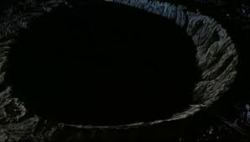 This futuristic tale takes place in Neo-Tokyo, an ultra-modern city that was built on the ruins of the old after an incident touched off World War III. This is a major them in the movie Akira and manga it was adapted from. Throughout the entire story, there is a pervasive sense of shock and horror over the destruction of the old city, and a sense of dread that it might happen again very soon…
This futuristic tale takes place in Neo-Tokyo, an ultra-modern city that was built on the ruins of the old after an incident touched off World War III. This is a major them in the movie Akira and manga it was adapted from. Throughout the entire story, there is a pervasive sense of shock and horror over the destruction of the old city, and a sense of dread that it might happen again very soon…
Enter into this story the characters of Kaneda and Tetsuo, two orphan boys who belong to a biker gang that is constantly engaged in battles with other gangs for control of the streets. Being children of the system after their parents died in the war, all they really have is each other and the other members of their biker gang. These surrogate families and their ongoing feuds provide a sense of community and an outlet for their pent-up energies, living in a world characterized by boredom and angst and haunted by a past filled with horror.
In addition, you have Colonel Shikishima, a man who witnessed WWIII and has dedicated himself to the rebuilding and ensuring that it never happens again. In addition to being a main character, he is representative of the generational gap in the story. As a stern, disciplined military man who was shaped by apocalyptic events, he is appalled by the sense 0f self-indulgence which he feels has set in with the younger generation.
And the apocalyptic nature of the story is something which is demonstrated over and over through intense scenes and nightmarish visions. In short, it’s an awesome take on the post-apocalyptic scenario, which could only come from firsthand experience.
Alas, Babylon: This 1959 novel by Pat Frank is one of the first post-apocalyptic stories of the nuclear age and has remained a science fiction ever since. Taking place in small town in Central Florida, Fort Repose, the story opens with a veteran-turned-lawyer named Randy Bragg who gets a cryptic telegram from his brother who works for the Strategic Air Command. He informs his brother that he will be sending his wife and kids to stay with his Randy, and ends it with “Alas Babylon”, a biblical reference which his brother uses as a euphemism ford disaster.
This 1959 novel by Pat Frank is one of the first post-apocalyptic stories of the nuclear age and has remained a science fiction ever since. Taking place in small town in Central Florida, Fort Repose, the story opens with a veteran-turned-lawyer named Randy Bragg who gets a cryptic telegram from his brother who works for the Strategic Air Command. He informs his brother that he will be sending his wife and kids to stay with his Randy, and ends it with “Alas Babylon”, a biblical reference which his brother uses as a euphemism ford disaster.
In time, he learns that the bad news concerns a potential Soviet attack, which inevitably takes place after much escalation. After bringing his sister-in-law and her kids to their home, they are all awoken in the night to the sounds of Miami being bombed. They residents awake to witness a mushroom cloud forming over Tampa shortly thereafter, and the events which characterize the following 24 hours they come to name “The Day” – i.e. a one day war.
The story delves into the effects of “The Day”, which are felt differently by people in Fort Repose. Tourists are trapped in their hotels, convicts escape from jails and prisons, the local retirement homes are filled with panicked people, and just about everyone tries to withdraw their money from the local bank and buy up supplies. The only reliable means of news comes through short wave radio.
As chaos begin to set in, Randy begins to organize neighbors to provide housing, food, and water for themselves and organizes the community to defense itself against highwaymen. As an active Army Reserve officer, Randy learns that he has the legal right to exercise martial law, and an order comes in over the short wave from the acting Chief Executive (who is governing from a bunker in Colorado) for any surviving officers to form local militias.
In the end, military helicopters arrive to evacuate people, but are refused as the locals tell them that they want to stay in the new home they have built. They learn the war is over, that the USA prevailed, and that country is now being run from Denver. However, the victory came at a tremendous cost, Millions are dead, entire stretches of the country are irradiated and won’t be habitable for a thousand years, and the US is now a third-rate power that is dependent on third world countries for aid. Faced with this prospect, the people of Fort Repose settle in and decide to face the “thousand year” night that is coming.
This book not only introduced readers to the likely prospect of what would happen in the event of WWIII, it also presented a likely scenario of how that was going to happen. While it the Soviets were apparently planning an attack in the first place, it was an accident that touched everything off. And in the end, how people went about rebuilding and trying to restore some semblance of normalcy was quite classic. In addition to inspiring numerous generations of nuclear holocaust fiction, numerous apocalyptic franchises owe an allegiance to him, not the least of which is the re-imagined series of Battlestar Galactica.
The City of Ember: This post-apocalyptic story, written by Jeanne DuPrau in 2003, takes place in an underground city named Ember. After many years of continuous habitation, the city is slowly running out of power and supplies. Similar to in tone and structure to Suzanne Martel’s 1963 story The City Under Ground, this city was apparently built to ensure that humanity had a place to live and wait out the effects of nuclear war.
This post-apocalyptic story, written by Jeanne DuPrau in 2003, takes place in an underground city named Ember. After many years of continuous habitation, the city is slowly running out of power and supplies. Similar to in tone and structure to Suzanne Martel’s 1963 story The City Under Ground, this city was apparently built to ensure that humanity had a place to live and wait out the effects of nuclear war.
The story begins when a two protagonists, Lina Mayfleet and Doon Harrow, receive a message which is apparently left by “the Builders” containing clues that could lead them back to the outside world. This message was kept in a box that was passed down from mayor to mayor, with instructions that it be opened after two hundred years. Until recently, the box had been lost, but as soon as Mayfleet and Harrow find it, the race is on to decipher it and find a way to the surface.
In the end, the children follow the note’s instructions through a series of caves that lead them towards the surface. When they see the city from above, they realize that they are underground, something which they never knew before. This scene, which calls to mind Plato’s “Allegory of the Cave”, provides the story’s big revelation. The story then ends on a cliffhanger note with the girls trying to alert the other inhabitants of what they’ve found.
The Matrix: The setting and back story of the Matrix revolve around two fundamental facts: One, that a terrible war between humanity and AI’s took place in the future; and two, that what is left of humanity lives underground due to the devastation wrought on the planet’s surface. Enter into this the concept of the Matrix, a simulated reality where humans are kept docile by being fed the lie that they live in the pre-millenial world, at a time when human’s were still in charge.
The setting and back story of the Matrix revolve around two fundamental facts: One, that a terrible war between humanity and AI’s took place in the future; and two, that what is left of humanity lives underground due to the devastation wrought on the planet’s surface. Enter into this the concept of the Matrix, a simulated reality where humans are kept docile by being fed the lie that they live in the pre-millenial world, at a time when human’s were still in charge.
But of course, not all human beings are able to accept the program and experience a sort of existential crisis as a result. When Mr. Anderson, hacker alias Neo, is presented with the answers he so desperately seeks, he is horrified to learn the terrible truth. Not only was it the year significantly later than he thought, but the world as he knows it was destroyed long ago. All major cities reduced to rubble, the sky itself has been “scorched”, and the surface rendered a cold, uninhabitable shadow of its former self.
This is a crucial element of the Matrix, which is not just a sci-fi story set in a post-apocalyptic world, but a metaphor for truth and “false consciousness”. With reality so displeasing and harsh, there are many who would prefer the warm comfort of a simulated world, which just happens to be a recreation of happier, stabler times. The metaphor is not just thick, but multi-layered!
It is for this reason that the majority of human beings accept the programming of the Matrix, even if they are only aware of this acceptance on an unconscious level. It is also the reason why those who choose to opt out of it, due to an innate feeling that their reality isn’t real, is a choice which must be made many times over. As Cypher himself demonstrated in the first movie, not everyone has the stomach for the real world, and will willingly betray their comrades for a chance to be put back inside. Others however, find hope in the prophecy of “The One”, the person who’s arrival will herald the end of the war and peace for humanity at last… or so it seems!
The Omega Man: Released in 1971 and starring (once again) Charlton Heston, this movie post-apocalyptic film is a classic amongst film buffs. Based on the 1954 novel, I Am Legend, this story has gone through many adaptations over the years and has been spoofed and imitated endlessly. Though the plot was updated for the most recent version (2007, starring Wil Smith), much of the elements – a post-apocalyptic world, a lone human survivor, fighting against mutants – have remained the same.
Released in 1971 and starring (once again) Charlton Heston, this movie post-apocalyptic film is a classic amongst film buffs. Based on the 1954 novel, I Am Legend, this story has gone through many adaptations over the years and has been spoofed and imitated endlessly. Though the plot was updated for the most recent version (2007, starring Wil Smith), much of the elements – a post-apocalyptic world, a lone human survivor, fighting against mutants – have remained the same.
Essentially, the plot takes place in a world that has been devastated after a terrible plague was unleashed and wreaked havoc on the world. In the film versions, this involved biological warfare between the Soviet Union and China – or a mutated cure for cancer – but was only hinted at in the book. In any case, the story revolves around a man named Robert Neville, a doctor who seems to be the last man on Earth, hence the term “Omega Man”.
Though technically not the last living creature, Neville appears to be the last human being who has not succumbed to the most dreaded aspect of the plague – transformation into a flesh-eating mutant. Whereas most of humanity died after exposure, a small minority was converted, leaving an even smaller minority of infected to be hunted as prey. Living in a fortified apartment with an arsenal, Neville spends his days patrolling the abandoned city and killing members of “The Family” – the albino mutants who are hunting him.
At the same time, Neville is dedicated to finding other survivors who have not turned. Eventually, he is saved by one such group of people, but discovers that they are not immune as he is. He decides to treat others using his own blood as a serum, while at the same time escaping to the wilderness to start a new life while leaving the mutants to die in the city. Ultimately, Neville is forced to sacrifice himself to stop the Family from overtaking the rest of them, but the survivors make it out, carrying with them a vial of his blood.
Though significantly different from the original novel, all versions of the story deal with a world in which all of humanity has been wiped out by a biological agent, not nuclear war or a natural disaster.
The Road: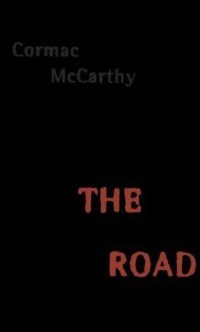 This 2006 novel by Cormac McCarthy, which was adapted into a 2009 movie of the same name, takes place in a post-apocalyptic world where a father and son wander the landscape together. Though it is not specified what caused the destruction they are forced to witness and endure, what is clear is the effect it had on the survivors. Most people have given up hope in the ashen landscape, while others struggle to stay alive and some even turn to cannibalism to survive.
This 2006 novel by Cormac McCarthy, which was adapted into a 2009 movie of the same name, takes place in a post-apocalyptic world where a father and son wander the landscape together. Though it is not specified what caused the destruction they are forced to witness and endure, what is clear is the effect it had on the survivors. Most people have given up hope in the ashen landscape, while others struggle to stay alive and some even turn to cannibalism to survive.
The plot involves an unnamed father and son who are venturing south towards the coast because they have realized that they will not survive the winter where they lived. Though the father is dying and they have barely any possessions to speak of, and the land in between is filled with horrors, the two keep going, fending off roving bands of cannibals and raiders and maintaining hope that the coast will be their deliverance.
All along, is father assures his son that they are the “good guys” who are “carrying the fire” through a dark terrible land. In the end, they find no refuge when they reach the sea and are forced to venture back inland, but the father finally succumbs to his illness and dies. He tells his son to maintain hope and to speak to him in his mind after he is gone, and the boy holds a vigil for days over his father’s body when he finally passes on.
With no idea what to do or where to go, he is eventually found by another family who claim to have been tracking them. The father of the group assures him he is one of the “good guys” and asks the son to join them. With no other options available to him, he agrees to join them and they set off together to find a new home.
Inspired by McCarthy’s own relationship with his son, and a great deal of speculation about what the apocalypse would look like, this story is a very personal take on the end civilization and the struggle to survive. Whereas a great deal of the survivors have resorted to unspeakable acts in order to stay alive, McCarthy redeems humanity by showing the lengths to which regular people will go to protect their families and ensure that good people live on when all the world goes to hell.
The Scarlet Plague: Here we have a post-apocalyptic classic that predates the nuclear age. Written by Jack London and published in 1912, this story was the original “last man on Earth” scenario which inspired such works as I Am Legend and many others. In addition to being based on the idea of a plague wiping out nearly all of humanity, the stories resolution involves the main character imparting his knowledge to others to ensure that something survives when he is gone.
Here we have a post-apocalyptic classic that predates the nuclear age. Written by Jack London and published in 1912, this story was the original “last man on Earth” scenario which inspired such works as I Am Legend and many others. In addition to being based on the idea of a plague wiping out nearly all of humanity, the stories resolution involves the main character imparting his knowledge to others to ensure that something survives when he is gone.
The story is set in San Francisco in the year 2073, sixty-years after a terrible epidemic, known as the Red Death,has depopulated the planet. Enter into this the story’s protagonist, a man named James Howard Smith, a survivors from the pre-plague era. As an aging man living in the San Francisco area, he is faced with the unpleasant question of what will happen when he dies. As one of the few people who is old enough to remember the pre-plague days, he possesses rare knowledge which will be lost.
Through Howard’s narrative, we learn how the plague spread throughout the world and of the struggles of the handful of survivors it left in its wake. This is apparently being told to his grandchildren, who he has decided to teach everything he knows to ensure that his knowledge will not be lost.
Much like the novels it helped inspire, the Scarlet Plague’s real value lies in its personal nature, relating how the struggle to survive goes beyond the mere physical. In the end, it is when people are facing death that what is most important in life is realized and affirmed. Or to put it is as Commander Adama did, “It’s not enough to survive. One must be worthy of survival.” Sorry! My mind keeps going back to BSG with all this post-apocalyptic talk. More on that one later…
The Terminator: Central to the story of the Terminator franchise is “Judgement Day”, the day when humanity was nearly destroyed in a nuclear holocaust that was triggered by the sentient machine known as “Skynet”. This serves as the backdrop to the story, along with the ensuing war between the human resistance and the machines its spawned.
Central to the story of the Terminator franchise is “Judgement Day”, the day when humanity was nearly destroyed in a nuclear holocaust that was triggered by the sentient machine known as “Skynet”. This serves as the backdrop to the story, along with the ensuing war between the human resistance and the machines its spawned.
Though the majority of the story takes place in modern-day Los Angeles, a great deal of attention is dedicated to the war in the future and what life is like for those who survived Judgement Day. Kyle Reese described his life in the following way: “There was a nuclear war… There were survivors. Here, there. Nobody even knew who started it. It was the machines… I grew up after. In the ruins… starving… hiding from [Hunter-Killers]. Patrol machines built in automated factories. Most of us were rounded up, put in camps for orderly disposal. “
Eventually, these camps were liberated by John Conner, the leader of the Resistance. After training and equipping the survivors, effectively turning them into a fighting force, Conner led them in a protracted war against the machines. For the most part, the resistance lived and operated out of underground facilities and went out at night to fight HK’s and Terminator’s, guerrilla-style. Survivors and refugees were gathered in these facilities, and their defenders were forced to constantly be on guard against infiltrators. Eventually, John Conner organized all his fighters into a massive offensive force and led them against the Skynet’s central HQ, destroying it and winning the war for humanity.
It was for this exact reason that the machines built their time machine and began sending Terminators back into the past. Since they could not defeat Resistance in the present, they reasoned that eliminating their commander before he was even born was their only recourse. This provides the set up for the entire franchise, with both the machines and the Resistance sending people back in time; the former to kill him and the latter to protect him and ensure that the war could be prevented.
The Walking Dead: Fans of this franchise will know instantly why I’ve chosen to include it on this list. Not only is it a gritty, realistic take on the zombie apocalypse, but it also manages to capture the essence of survival and the struggle to stay human when everything around you has fallen. Part of what makes this show so bang on is the fact that the character’s personal struggles go well beyond the need to stay alive.
Fans of this franchise will know instantly why I’ve chosen to include it on this list. Not only is it a gritty, realistic take on the zombie apocalypse, but it also manages to capture the essence of survival and the struggle to stay human when everything around you has fallen. Part of what makes this show so bang on is the fact that the character’s personal struggles go well beyond the need to stay alive.
In addition to finding food, ammo, and a place to set down, there’s also the constant battle to keep hope alive. This takes them at first to the CDC, where the expect to find answers, a cure, and some protection. But of course, all they find is a single scientist who can explain how the zombie illness works, but has no idea how to cure it.
And of course, the familiar and realistic themes of loss, suicide, procreation, betrayal, and brutalization play a central role to the development of the story. Everyone who has survived the zombie apocalypse has lost people near and dear to their heart. As a result, many people have a hard time going on, some of whom commit or actively contemplate suicide. Rick and Sarah, the show’s main protagonists, also face a tough choice when they realize she is pregnant. Essentially, they’re not sure it would a good idea to bring a baby into this post-apocalyptic world. Much like the decision to carry on, it often seems that embracing death would be a far more merciful decision.
Amongst the other main characters, there is also the extremely difficult choice between survival at all costs and maintaining one’s humanity. Whereas Shane seems to favor survival, and becomes a hardened, amoral man who will kill anyone who gets in his way, the elderly Dale is committed to not being pulled down into a world of misery and letting it change him. With everyone else, the decision is the same, with people falling to one side or the other and divisions setting in.









